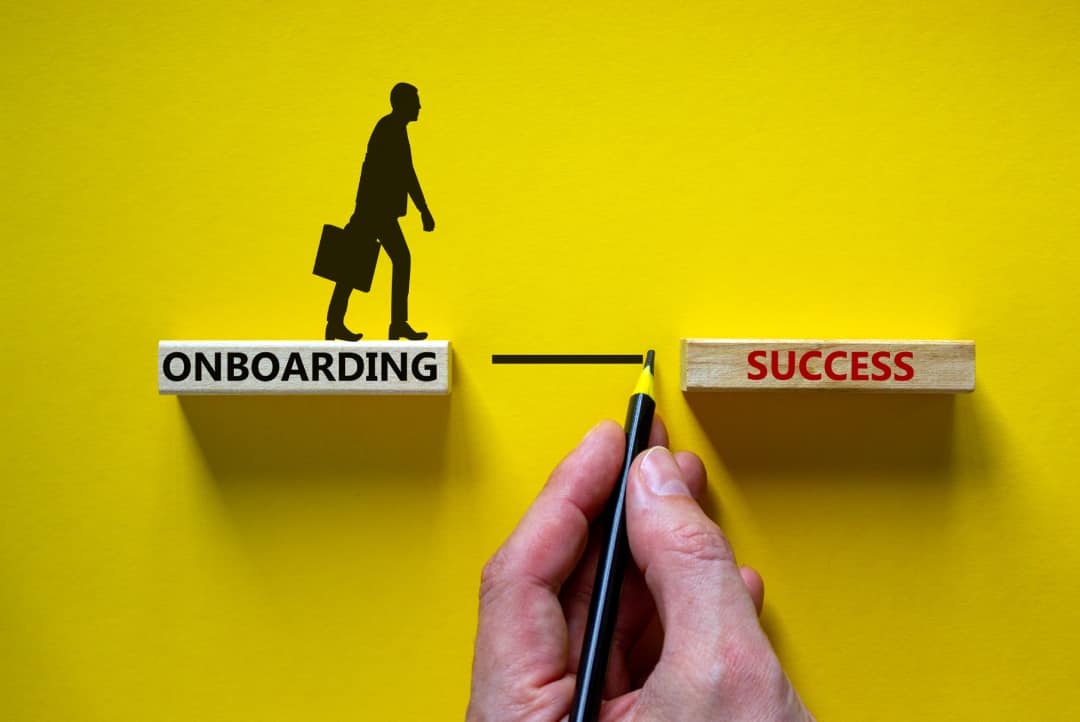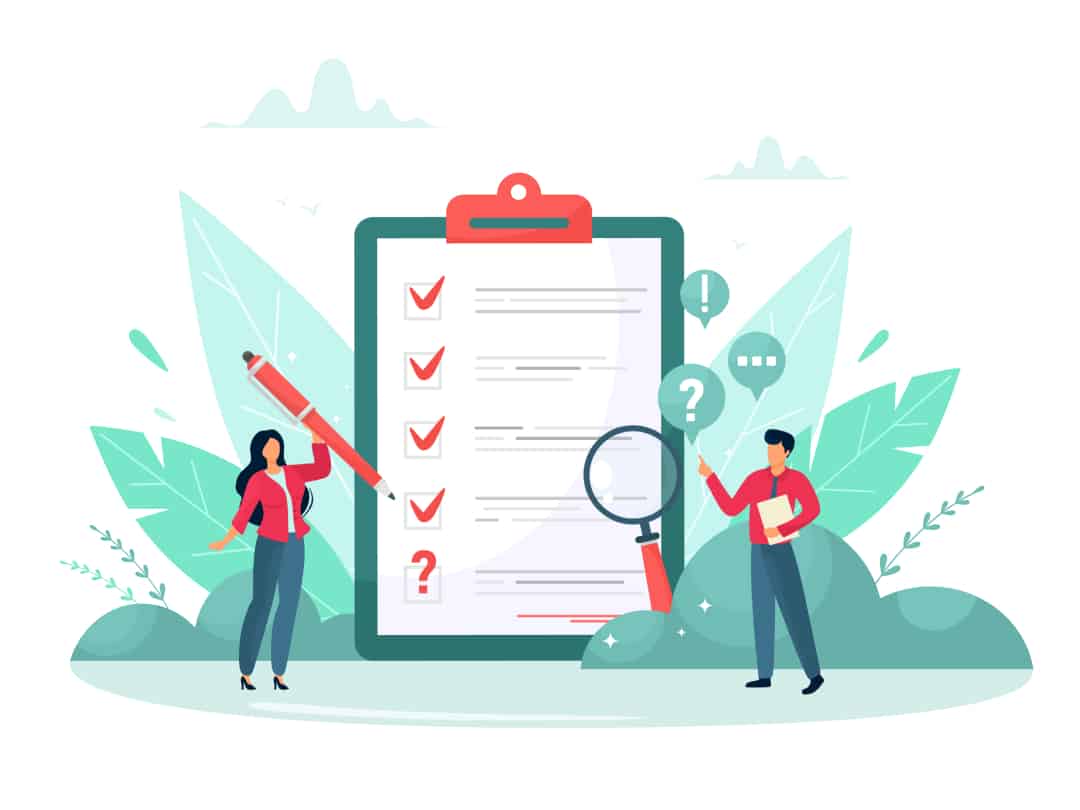It is finally happening!
After all of the meetings, calls, late-night changes, and final approvals, your business has landed its newest client, and they’re eager to get started! You’re excited, and they’re excited…but what’s next?
This is one of the most critical times in the relationship. The handoff from sales to service is something that can make or break your customer’s experience.
So, how do you make sure that you and your client are on the right track? Then your answer is an Onboarding Checklist. You must design an effective and efficient onboarding process for a smooth function of your relationship with your client.
What is an Onboarding Process?
In the easiest of words, the process of introducing new clients to your company, answering their questions and concerns, and assuring they understand the services you offer.
Client onboarding is one of the most critical functions for any organization because it immediately affects the client’s experience with your firm, which in turn affects profits.”
The first 90 days of a customer’s experience are the most critical and impactful.
Proper Onboarding increases the customer’s trust in your capacity to deliver on what was promised during the sales process.
It is a stage in the customer journey when the consumer is excited and interested in the direction and guidance delivered. They’re eager to create a long-term strategy and learn what they need to succeed.
The Importance of client onboarding

Now, most of you would believe that once the client is on-board, what is the need for all these extra efforts, but this is where most of us go wrong.
Client onboarding is more than just a nice add-on! It’s a crucial business strategy. When done correctly, it results in:
1. Lower Client Churn Rate: Churn rate, also known as attrition rate, is the rate at which consumers discontinue doing business with an organization during a specific time period. Churn refers to the number of subscribers who cancel or do not renew their subscriptions. The first 90 days are when clients are most likely to leave. To help them stick, aim to create relationships and demonstrate value early on in their journey.
2. Increased Efficiency: It puts all of the information you need at your fingertips, putting you in the ideal position to start working for a customer. As a result, you’ll be able to boost efficiency and eliminate bottlenecks.
3. Prevents Scope Creep: Scope creep, also known as “requirement creep,” refers to how a project’s requirements tend to increase over the course of a project’s lifespan; for example, what began as a single deliverable becomes five. This can happen when a project’s scope is not properly specified, documented, or controlled. Establish goals early on so that all parties know what they should expect from each other, which lowers Scope Creep.
4. More satisfied clients: Clients tend to feel more satisfied having a defined plan of action, which in return develop solid relationships. This helps your Net Promoter Score (NPS) to soar.
5. More referrals: If you satisfy your customers early on, you’ll be far more likely to develop great relationships, upsell existing customers in the future, and receive referrals based on your excellent work and customer relationships
6. Assures compliance: Having a well-thought-out, highly repeatable onboarding process ensures that compliance is baked into everything you do, making everything perfect & in place for better functioning.
Steps To Create an Effective Onboarding Process.

Step 1: Get the Contract Right
The proposal, contract, and payment are the first three Pillars of any Onboarding Process.
First and foremost, you must obtain a signed contract, also known as an engagement letter, from your client. Do not begin any of their work until you have a signed copy.
This contract should also provide important pricing and billing information. The business proposal includes your contract and terms of service.
This means you simply need to send one neatly structured document rather than a proposal, contract and invoice separately.
So make sure you have everything in check before you & your team start with any project.
Step 2: Onboarding Questionnaire for New Clients
When you onboard clients, it is your first opportunity to reconnect with the client after the sales process, so make the most of it by creating a positive first impression.
Send a detailed yet brief welcoming email with all necessary information that the customer might need to proceed.
And then, it should be followed by a client onboarding questionnaire to understand the client and their needs better.
Here are a few pointers that you should keep in mind before sending out a questionnaire:
- Avoid including too many questions (keep it around 10-15 to 20 at max)
- Offer to assist with any queries or concerns.
- Consider how you will share the questionnaire using a Google Sheet or any software app. Make sure the client is familiar with the medium you select.
- Share a deadline politely. (e.g., we’d really appreciate it if you could return the questionnaire within 10 business days). Don’t forget to remind the client if the questionnaire isn’t shared within the given timeline.
You can check out our Right Start Bundle Onboarding Form to get a better idea of what we are talking about!
Step 3: Time to Get the Project Rolling
Once you’ve gathered all the necessary information, you can assign the client to the team in charge.
Meet with the team that will be handling the client and provide them with the following information:
- Project synopsis
- A well-thought plan & timeline
- Any necessary research on the client
- What would make this project effective for the client
- What the client must provide for the project to be completed
It’s also essential to share any past communications. Repeating yourself to different members can be inconvenient for the customer. Ideally, all of this data should be saved (in your CRM or client management software) for future reference.
After the meeting, you can start by using PMS (project management system) or workflow software, such as Basecamp, ClickUp, Asana, Workflow Max, Karbon, etc., for the project.
If you frequently encourage clients to work on projects with you, now is the time to do so.
Step 4: Organize a client kick-start meeting.
After completing the previous steps, the final item on your checklist should be a kick-start meeting with the client.
Do not initiate your first meeting until you have double-checked everything mentioned above.
The introductory meeting’s main goal is to have everyone on the same page. If you don’t do this, your team might go one way while the client expects you to go in another. And trust us, you would never want that.
In the client kickoff meeting, don’t forget to cover these topics:
- The client and the team are acquainted.
- Business objectives of the client
- Discuss key goals and responsibilities (including a detailed timeline of action)
- What are your plans for the future?
- Final Q&A
You should have established a good rapport between the client and your team by the end of this meeting, answered any of the client’s questions or concerns, and outlined how the project will progress further or any future plans you have in mind.
Step 5: Time for Welcome Package
Make sure the client receives a welcome package after your kickoff meeting. This is a time to educate and reaffirm your client’s purchase choice. Make them feel special with a little extra effort.
Your welcome package can include a mix of both digital and physical stuff. Your digital content package can include items like:
- Welcome video: Creating a welcome video can be an excellent method to pique your clients’ interest in working with you. Giving it a personal touch always goes a long way!
- A Business Cheat-Sheet: A document that your client prints off and refers to whenever they require information about your company. It should include Regular business hours, location, contact information, FAQs, etc.
- Relevant information sources: It can be anything your customer needs to read in order to get the most out of this project. It could be a series of articles or videos that aid them to understand what they can expect or what goes on in the process of a project. In short, any relevant sources, articles, or videos can be included in the welcome package.
- Testimonials: Sometimes, bragging isn’t such a bad thing. If you have already delivered excellent results for similar businesses, you can always tell your client about your success stories as it will strengthen their belief in you.
Make sure to send your client something physical as well. Clients, like everyone else, enjoy receiving packages in the mail.
Step 6: Post Onboarding Checkup call
Set up a check-in call 30 days after starting work with a client. This is your chance to confirm that no one dropped the ball throughout the onboarding process and that everything is operating properly on their end.
Remember that the first 90 days are crucial in creating a positive first impression of your organization.
You will be able to retain more clients and create stronger relationships if you can spot errors early and fix them in the future!
This is also a good moment to gently nudge clients for more information or papers that they haven’t yet sent over.
An email may get lost in their inbox or be unintentionally overlooked. You’re far more likely to get a response if you discuss it face to face (or over a zoom call).
Wrapping up
Remember that the ultimate goal is to make your life and the lives of your clients easier. If you have your own ideas about how to accomplish this, test them out when you onboard your next client.


